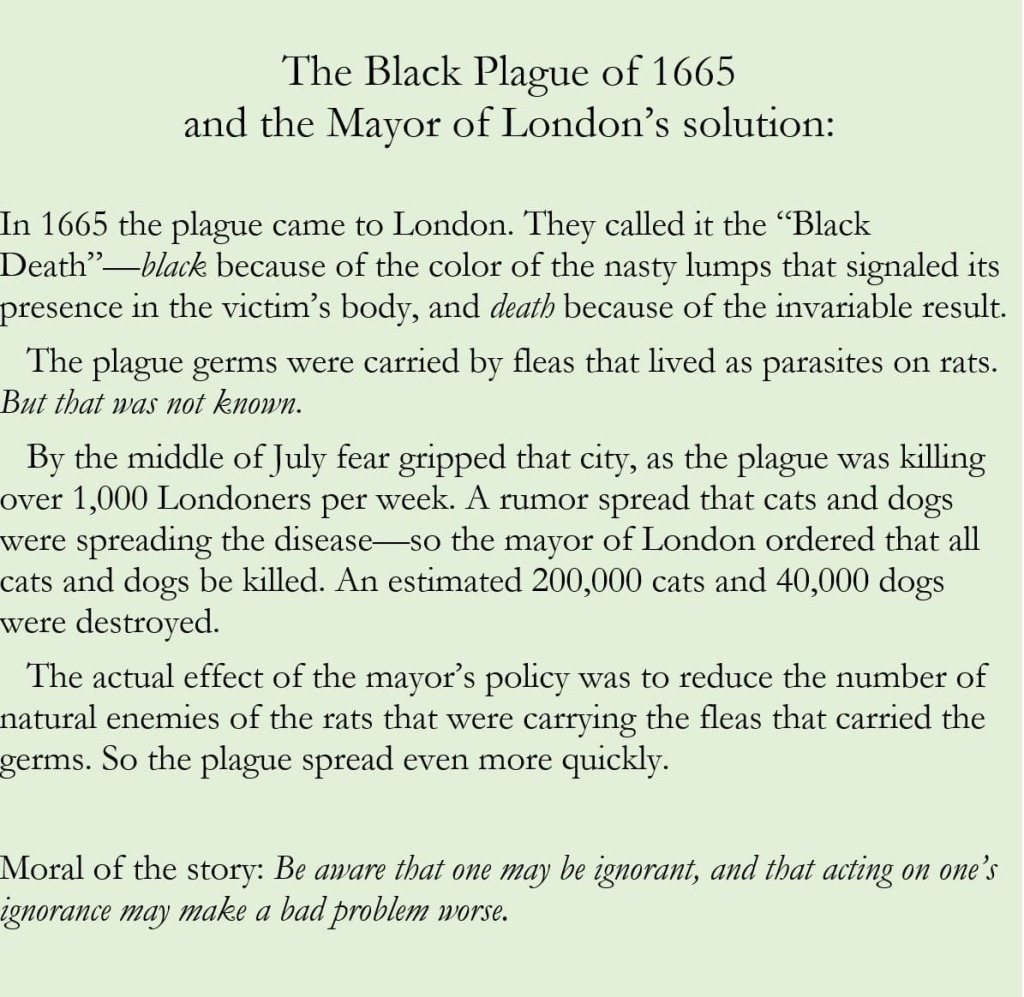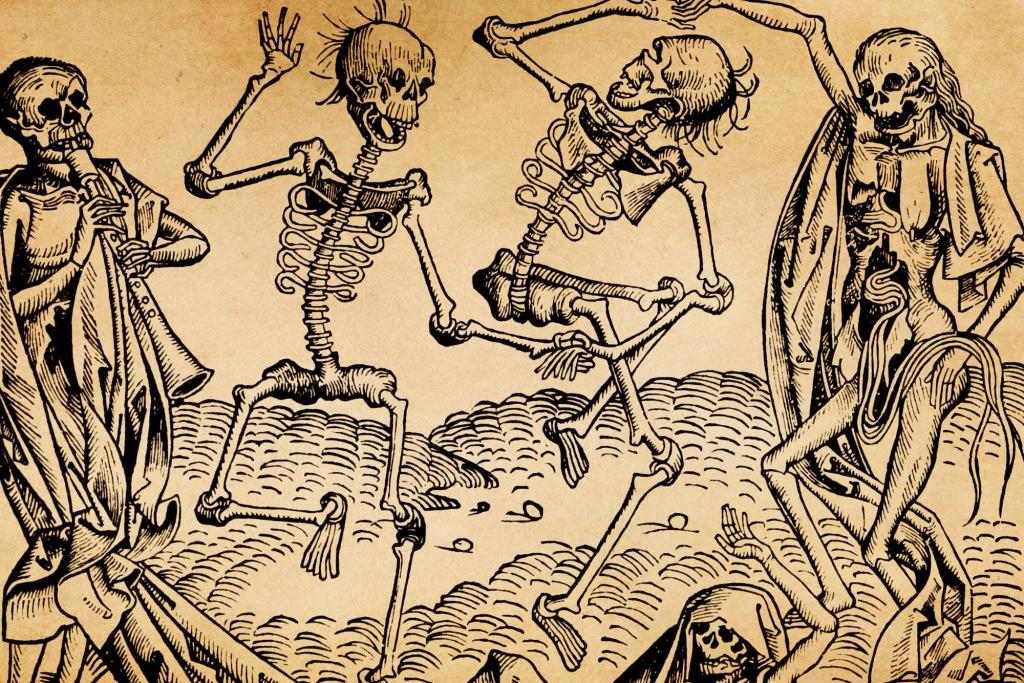

The Black Plague of 1665 and the Lord Mayor of London: In 1665 the plague came to London. They called it the “Black Death”—black because of the color of the nasty lumps that signaled its presence in the victim’s body, and death because of the invariable result. The plague germs were carried by fleas that lived as parasites on rats. But that was not known. By the middle of July fear gripped that city, as the plague was killing over 1,000 Londoners per week. A rumor spread that cats and dogs were spreading the disease—so the mayor of London ordered that all cats and dogs be killed. An estimated 200,000 cats and 40,000 dogs were destroyed. The actual effect of the mayor’s policy was to reduce the number of natural enemies of the rats that were carrying the fleas that carried the germs. So the plague spread even more quickly. Moral of the story: Be aware that one may be ignorant, and that acting on one’s ignorance may make a bad problem worse.
You wouldn’t happen to be alluding to the possibility that strapping a sopping bacterial colony at our respiratory intake could have adverse effects? If the Legionella don’t seem to be fighting off the COVID, one can simply snatch that saliva rag they’ve been fondling all day, and discard it in the parking lot before grabbing the door handle on their way into their pandemic-mani-pedi.
Dunning-Kruger anyone?